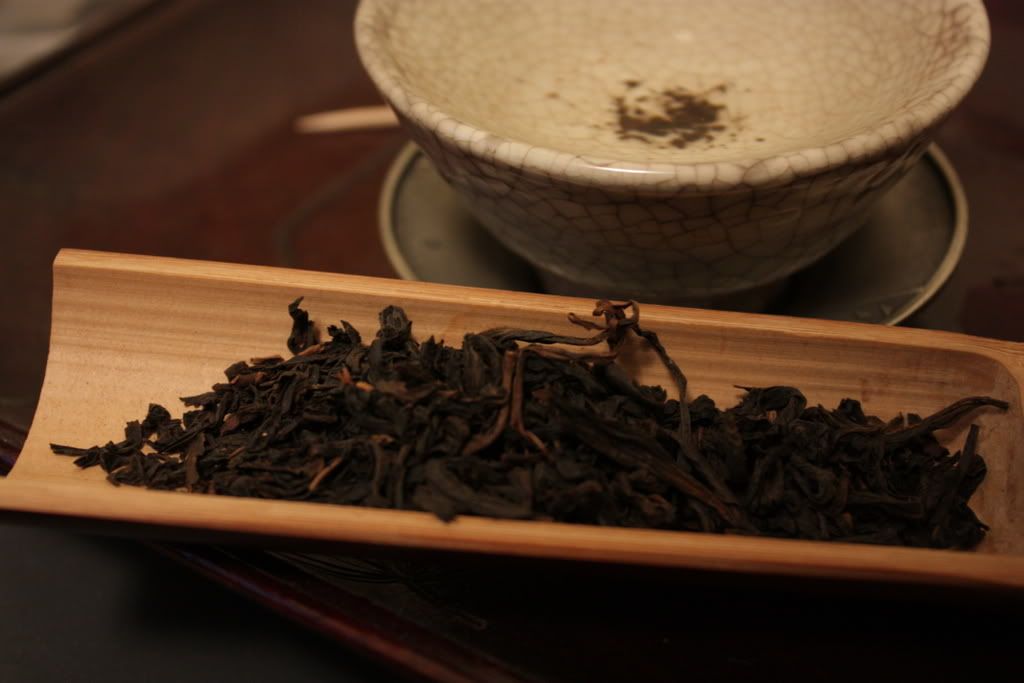My regular tea menu includes basically three kinds of teas these days. Aged oolongs are the ones I drink the most often, followed by youngish puerh (youngish means nothing from the past two years, generally speaking). Then I throw in some occasional aged puerh of one type or another. I drink almost nothing else these days, despite having large amounts of yancha and some less aged oolong sitting around. A friend recently asked to be served green tea, and I must say I don’t really have any fresh green tea to speak of at all, since I never finish them and it ends up being a waste of money. I used to drink almost only green tea, but those were the days.
I can say though, that there is something universal about tea, no matter the type, that trascends the differing tastes that one gets from them. I think it is quite a normal progression for many tea drinkers to first be attracted to the higher aromatics from a green or a light oolong tea, then getting more interested in teas that are of a deeper, darker nature. Of course, that’s only speaking from the point of view of those who are interested in Chinese teas; black tea drinkers, for example, may have different experiences. Nevertheless, I find that after all these years of drinking tea, that they all share a common “tea” taste. Sometimes this “tea taste” is well hidden behind the aromatics, but always discernable. I often find that the best way to taste them is when the tea gets cold, or at least cooled. Then, drinking it in larger sips, you can taste that universal “tea” taste that you will find no matter what kind of tea it is, and no matter how old it is. It has a distinctive feeling on the tongue, and a certain amount of aftertaste. It tastes leafy, but not entirely so, and is not necessarily bitter or anything like that. Very often, it is only apparent after a number of infusions — after all the easily soluable compounds are gone, I suppose.
I sometimes wonder if this is what separates good from bad tea, and that after long exposure to teas, we learn how to distinguish the good from the bad with these “deeper” taste. After all, the fleeting, first-infusion tastes are easily discernable, but also very momentary. On the other hand, some teas, generally the better ones, tend to go on, and on, and on, without giving up no matter how many infusions you put it through. This applies to not only puerh, but also oolongs. Greens are less tenacious, but it probably has as much to do with the fact that they are greener shoots than anything else. Rare are the teas that are great that don’t last very long.


















 RSS - Posts
RSS - Posts
I took you at your suggestion and have been reading some of your old post-Covid posts. I haven’t been to…